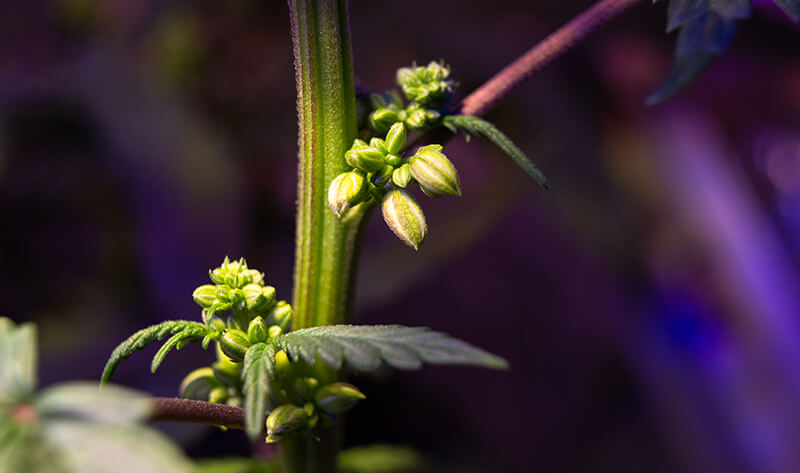
Deciphering the cannabinoid jargon
Ever since hemp was legalized back in 2018, it seems you can’t go a day without hearing about CBD or seeing it appear on the counter of yet another store or gas station. People are quickly becoming more educated about the therapeutic effects of various cannabinoids, from CBD to THC, but it can be easy to get lost in the latest jargon sometimes.
Once you know the difference between cannabinoids, phytocannabinoids, and endocannabinoids, it’ll be easier to explain potential phytocannabinoids benefits.
In this article, we’ll tell you everything you need to know about phytocannabinoids, including the difference between cannabinoids, phytocannabinoids, and endocannabinoids, and how they’re able to exert influence within our bodies.
- Cannabinoids vs Endocannabinoids vs Phytocannabinoids
- What are Cannabinoids?
- What are Endocannabinoids?
- Introducing the Endocannabinoid System
- Endocannabinoid Deficiency
- What are Phytocannabinoids?
- What are the Benefits of Phytocannabinoids?
- Phytocannabinoids Dosage

Difference between Cannabinoids vs Endocannabinoids vs Phytocannabinoids
Cannabinoids – Biologically-active chemical compounds found only in cannabis and hemp
Endocannabinoids – Neurotransmitters, similar to cannabinoids, that interact with cannabinoid receptors in our endocannabinoid system
Phytocannabinoids – Biologically active chemical compounds found in any plant that have cannabimimetic properties, meaning they are similar to cannabinoids via their interaction with the endocannabinoid system and/or their chemical structure

What are cannabinoids?
If you look for a phytocannabinoids definition in the dictionary, you won’t find one. Although you may find a definition for cannabinoids, which, according to the Merrium-Webster dictionary, is:
1: any of various naturally-occurring, biologically active, chemical constituents (such as cannabidiol or cannabinol) of hemp or cannabis including some (such as THC) that possess psychoactive properties
2: a substance that is structurally or functionally similar to cannabinoids derived from hemp or cannabis
Cannabinoids were first discovered in the cannabis plant back in the 1940s and over the years, scientists have discovered many more, some of which are more abundant than others.
Until recently, the most famous cannabinoid of all was delta-9 THC (also known simply as THC). It is one of the most abundant cannabinoids that can found in cannabis and was the most widely studied for many years because it has the ability to intoxicate us and scientists were keen to learn how and why.
Despite being discovered earlier than THC, CBD stepped into the spotlight after it was discovered to have incredible anti-seizure properties, leading to the only FDA-approved CBD-based medication, Epidiolex. CBD is found in cannabis, but it and many other cannabinoids can also be found abundantly in hemp, hence the recent influx of hemp-derived CBD products.
However, there are at least 144 known major and minor cannabinoids that can be found in cannabis and hemp plants, including CBG, CBN, CBC, CBDV, and THCV.
What are endocannabinoids?
Human opiate receptors were discovered in 1973, but it wasn’t until 1988, in a government-funded study, that Allyn Howlett and William Devane discovered receptor sites in the mammalian brain that responded to these chemical compounds found in cannabis.
These receptors, aptly named cannabinoid receptors, were part of the super-family of G protein-coupled receptors, alongside dopamine, serotonin, adrenaline, and opiate receptors (to name a few). It wasn’t too much longer before scientists realized that these cannabinoid receptors were actually the most abundant type of neurotransmitter receptor in the brain.
Through DNA sequence mapping, cloning receptors, and genetically-modifying mice, scientists were able to prove that the delta-9 THC cannabinoid worked by directly activating cannabinoid receptors in the brain. Around this time a second type of cannabinoid receptor was also discovered (cannabinoid receptor 2 or CB2) throughout our immune system and peripheral nervous system.
It occurred to some scientists that the presence of cannabinoid receptors in our bodies suggested that we must produce our own chemical compounds that interact with them. Surely we wouldn’t have evolved these receptors for the sole reason of interacting with the cannabis plant?
They were right. In 1992 the first endogenous cannabinoid, or endocannabinoid, was discovered. It was named anandamide, from the Sanskrit word ananda meaning bliss, and was followed shortly thereafter by the discovery of 2-arachidonoylglycerol (2-AG), as well as a handful more.

Introducing the endocannabinoid system
By proving that our brain and bodies produce cannabinoids that interact with cannabinoid receptors, Dr. Lumir Hanus and Dr. William Devane had proved the existence of a previously unknown molecular signaling system in our bodies, the endocannabinoid system (ECS).
Evidence shows that the endocannabinoid system regulates a vast range of essential cognitive and physiological functions that help our bodies maintain a state of balance, or homeostasis, despite constant fluctuations in our external environment.
When the ECS detects an imbalance, it synthesizes endocannabinoids to send messages via receptors to stimulate a chemical response in order for our bodies to return to homeostasis. However, sometimes there is a problem with our endocannabinoid system signaling, in a condition known as Clinical Endocannabinoid Deficiency.
Endocannabinoid deficiency
An endocannabinoid system deficiency may occur for several different reasons, including when:
- our body isn’t producing enough endocannabinoids
- our body isn’t producing enough cannabinoid receptors
- our body is producing too many enzymes that are responsible for breaking down our endocannabinoids
- we are consuming foods and/or medicines that disrupt or decrease ECS signaling

What are phytocannabinoids?
Until recently, cannabinoids were the only plant natural compounds that were known to directly interact with our cannabinoid receptors, but scientists have now discovered other plant natural products, outside of cannabis and hemp, that also interact with these receptors. They have been found in some flowering plants, liverworts, and fungi.
This prompted the new definition, phytocannabinoids, to be coined, with the word phyto deriving from the Greek word for “plants” python.
By adding this prefix, the term phytocannabinoids refers to all plant-derived compounds (not just those found in cannabis and hemp), capable of interacting with our cannabinoid receptors, and/or that share a chemical similarity with cannabinoids.
How many phytocannabinoids have been discovered?
So far, at least 144 cannabinoid compounds have been discovered within cannabis and hemp, but other types of phytocannabinoids have also been found in;
- Echinacea purpurea
- Echinacea angustifolia
- Echinacea pallida
- Acmella oleracea
- Helichrysum umbraculigerum
- Radula marginata
- Rhododendron dauricum
- Rhododendron anthopogonoides
- Cylindrocarpon olidum
- Black truffles
…to name just a few.
The most famous phytocannabinoids that exist outside of cannabis and hemp are lipophilic alkylamides found in the echinacea genus of plants. They are structurally similar to anandamide and are highly active in the central nervous system.
Preclinical research has shown that these compounds exhibit selective binding CB2 affinity and certain Echinacea alkylamides have also been shown to inhibit the reuptake of anandamide, in a similar fashion to CBD.

What are the benefits of phytocannabinoids?
Many eminent scientists now believe that the endocannabinoid system may be involved in all human disease.
One team of researchers said that “modulating ECS activity holds therapeutic promise for a broad range of diseases, including neurodegenerative, cardiovascular and inflammatory disorders, obesity/metabolic syndrome, cachexia, chemotherapy-induced nausea and vomiting, tissue injury and pain, among others”.
It is thought that if our endocannabinoid systems are deficient for some reason, then supplementing our diet with phytocannabinoids may help to improve our overall endocannabinoid tone, potentially helping our bodies to achieve and maintain homeostasis once more.
Some people would even go so far to say that our bodies need support from phytocannabinoids in a similar way that other systems in our bodies need nutritional support on a regular basis, making phytocannabinoids absolutely essential to our good health and wellbeing.
This is supported by the fact that many people who choose to take a phytocannabinoid supplement (like CBD), aren’t looking for symptom relief, but instead they choose to introduce CBD into their daily life for its ability to improve their overall mood and feeling of wellbeing.
The fact that CBD seems to have something to offer everyone may indeed be the reason why full-spectrum CBD products are becoming so very popular.
To truly understand the potential benefits that could be offered by phytocannabinoids, we need to learn more about the role of the endocannabinoid system and how these compounds interact with it.
It has already been shown that the endocannabinoid system is vital in regulating a wide range of essential functions, including memory, mood, sleep, inflammation, pain sensation, motor skills, and immune response, which is why scientists are concentrating their research within these areas in particular.
Phytocannabinoids dosage
The dosage of cannabinoids that you might need or benefit from appears to vary wildly from one person to another and may be dependent on a number of factors, including body weight, metabolism, chemistry, and the type of symptom relief you seek.
Because there isn’t a one-size-fits-all dosage, it’s very important to work out your ideal dosage by starting with a very low dose and slowly working your way up until you achieve the desired effects.
Keeping a diary over this time can be very useful in helping you remember what dose you’ve taken, as well as any changes in how you feel.
